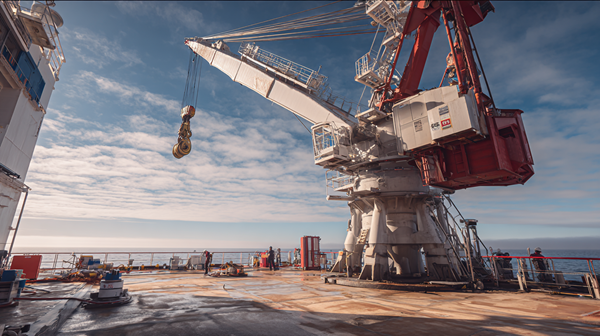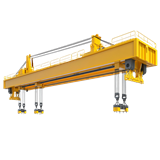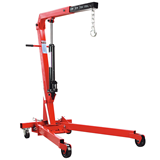Key Takeaways
- Choose the right type: Knuckle boom cranes offer a 30-40% smaller stowed footprint and superior articulation for complex lifting in confined spaces. Stiff boom cranes provide maximum reach and lifting capacity for simpler tasks.
- Budget for more than the purchase price: New marine cranes range from $50,000 to over $500,000. Remember to factor in 10-15% of the purchase price annually for maintenance, installation, and certification.
- Compliance is non-negotiable: In Australia, ensure your crane meets AS 1418.1 standards, has a valid Design Registration (DR), and undergoes annual third-party inspections for safe and legal operation.
- Prioritise corrosion protection: A multi-layer marine-grade paint system and stainless steel components are essential for longevity in the harsh saltwater environment.
- Financing preserves cash flow: A chattel mortgage is often the most tax-efficient option for Australian businesses, allowing you to own the asset and claim the GST upfront.
- Warranty is your safeguard: A standard warranty of 12-24 months on major components is typical. Clarify what it covers for corrosion, a key failure point in marine environments.
Introduction: Elevating your marine operations
For any Australian marine business, a marine crane is a critical investment that directly impacts your efficiency, safety, and profitability. The right crane can streamline tasks, reduce manual labour, and enhance safety standards. However, the harsh, corrosive marine environment demands robust engineering and unwavering reliability. This guide cuts through the complexity to provide the essential information you need to make an informed investment that truly elevates your marine operations.
Understanding marine crane types
Choosing the right type of marine crane depends on your vessel type, load capacity, and operational needs.
Knuckle Boom Cranes
- Features: Articulated boom that folds in sections for compact storage.
- Capacity: 1–50 tonnes.
- Best for: Offshore supply vessels, fishing boats, and small cargo ships.
- Pros: High manoeuvrability, easy to store, precise handling.
- Cons: Lower lifting capacity compared to pedestal cranes.
Telescopic Cranes
- Features: Boom extends and retracts like a telescope.
- Capacity: 5–150 tonnes.
- Best for: Bulk cargo ships, harbour operations.
- Pros: Versatile, space-efficient, suitable for variable load heights.
- Cons: Slower setup and deployment time compared to knuckle boom cranes.
Pedestal Cranes
- Features: Fixed base mounted on the deck or quay.
- Capacity: 10–200+ tonnes.
- Best for: Heavy-lifting operations on large vessels and offshore rigs.
- Pros: Strong, stable, suitable for high-capacity lifts.
- Cons: Limited mobility, requires permanent installation.
Deck Cranes
- Features: Designed for deck cargo handling with a fixed or slewing base.
- Capacity: 1–80 tonnes.
- Best for: Cargo and supply vessels.
- Pros: Simple operation, good for medium-duty lifts.
- Cons: Less versatile for complex lifting operations.
Budgeting for your investment
A marine crane is a significant capital outlay. A smart financial strategy is essential.
Price ranges and associated costs
- Small Stiff Boom (1-5t): $50,000 - $150,000
- Medium Knuckle Boom (5-20t): $150,000 - $400,000
- Large Offshore Cranes (20t+): $400,000+
Remember to budget for these additional costs beyond the purchase price:
- Installation and commissioning: Integrating the crane with your vessel's hydraulic and electrical systems.
- Initial certification: Load testing and inspection by a certified third party.
- Operator training: Ensuring your team is competent and licensed.
Navigating your financing options
Consider financing to preserve your working capital. A smart finance structure lets you get the asset working immediately while you pay for it over its useful life. Over 70% of Australian businesses prefer a chattel mortgage for its tax advantages.
- Chattel mortgage This popular option means you own the asset from day one. This allows you to claim the GST upfront on your next BAS and take advantage of tax deductions like depreciation, interest, and the instant asset write-off scheme.
- Finance lease A finance lease is a long-term rental where the financier owns the asset. It offers lower monthly payments which are typically tax-deductible, and at the end of the term, you can choose to purchase the asset for a residual value, upgrade, or return it.
- Hire purchase With a hire purchase, you hire the equipment and automatically gain ownership after the final payment. Its tax treatment is similar to a chattel mortgage, allowing for depreciation and interest deductions.
When comparing offers, look beyond the headline interest rate:
- Comparison Rate: This includes most fees and shows the true cost.
- Hidden Fees: Check for any establishment or ongoing account fees.
- Balloon Payment: Be aware of any large lump-sum payment required at the end of the term.
Key operational features for the marine environment
Your crane must be built to withstand the harsh conditions of the sea.
- Corrosion Protection: This is paramount. A multi-layer, marine-grade epoxy paint system is essential. Key components like pins, fasteners, and hydraulic fittings should be stainless steel to prevent premature failure.
- Hydraulic System: This is the heart of your crane. Look for high-quality pumps and cylinders from reputable brands. A reliable hydraulic system ensures smooth, predictable, and safe operation in a dynamic sea state.
- Control Systems: A wireless remote control is now a standard safety feature. It allows the operator to move around the vessel to get the best possible vantage point of the lift, dramatically reducing blind spots.
- Safety Features: Modern cranes should include critical safety interlocks like overload protection (prevents lifting beyond rated capacity) and hose burst valves (prevents uncontrolled lowering of the load).
Maintenance, parts, and longevity
Proactive maintenance is the key to a long service life. With proper care, a quality marine crane can last 20-30 years. Your program should include:
- Daily checks: Visual inspection of hoses, cylinders, and wire ropes by the operator.
- Regular lubrication: Weekly or monthly greasing of all moving parts and pivot points is critical in a saltwater environment.
- Scheduled servicing: Adhere to manufacturer-recommended service intervals (typically annually or every 250-500 hours) by a qualified technician.
- Parts and support: Before buying, confirm that the manufacturer has a reliable, Australia-based network for genuine parts and technical support to minimise potential downtime.
Australian compliance: What you must know
Operating a marine crane in Australia is subject to strict WHS regulations.
- Australian Standards (AS): Your crane must be designed and manufactured in accordance with AS 1418.1 and used according to AS 2550.1.
- Design Registration (DR): The crane's design must be registered with the relevant state WHS regulator (e.g., SafeWork NSW). You cannot legally operate a crane without a valid DR number.
- Annual Inspections: A competent person (like a certified crane inspector) must thoroughly inspect your crane at least every 12 months. A major inspection is also required at specified intervals (typically 10 years).
- Operator Licensing: Your operators must hold the appropriate High Risk Work Licence (HRWL) for the specific type and capacity of the crane.
Common questions from buyers
What lifting capacity do I really need?
Always build in a safety buffer of 20-25%. If your heaviest regular lift is 8 tonnes, you should look for a crane with a minimum capacity of 10 tonnes. This accounts for the crane's reduced capacity at maximum reach and the dynamic forces at sea.
Can I use a land-based crane on a vessel?
No, absolutely not. Land cranes are not designed for the dynamic forces (rolling, pitching) of a vessel, nor do they have the necessary corrosion protection. Using a land-based crane at sea is incredibly dangerous and illegal in Australia.
What does the warranty cover?
A standard warranty is 12-24 months on major components. Pay close attention to the fine print regarding corrosion, seals, and electrical components, as these are common failure points in the marine environment.
Conclusion
Investing in a marine crane is a significant decision that impacts your operational safety, efficiency, and financial viability. By understanding the different types, budgeting for ongoing costs, and diligently adhering to Australia's strict compliance requirements, you can select a strategic asset that will elevate your marine operations, enhance safety, and contribute to your long-term growth in Australia's dynamic maritime industry.















